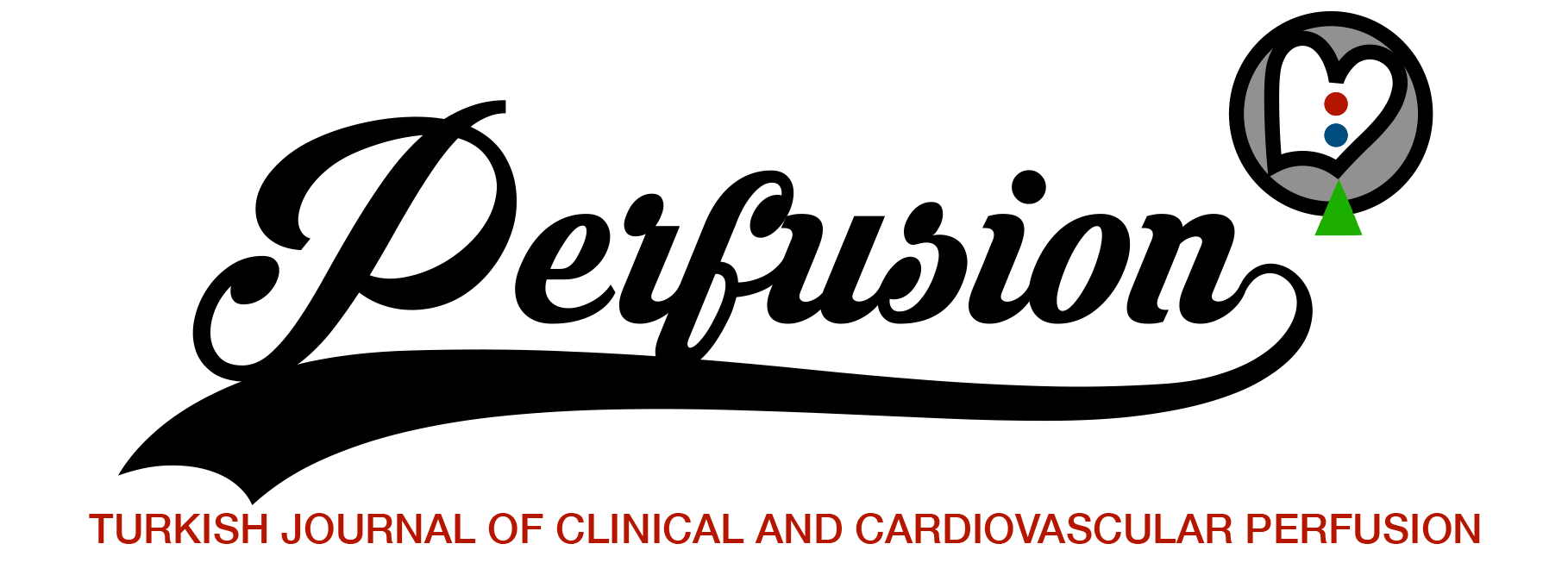Abstract
Objective
The aim of the study is to analyze the factors affecting the efficiency of extracorporeal memb-rane oxygenation (ECMO), which is the average usage time. According to the results obtained, the aim is to determine the conditions under which oxygenator efficiency decreases, to maintain efficiency, and to reveal risk factors by preventing these problems in the early period.
Materials and Methods
Twent-one patients who underwent open heart surgery and ECMO at University of Health Sciences, Dr. Siyami Ersek Thoracic Cardiovascular Surgery Training and Research Hospital were included in the study. Age, gender, body surface area, presence of hypertension or diabetes mellitus, name of the operation, cardiopulmonary bypass time, cross-clamp time, cannula diameter, cannulation location and preoperative values (high-density lipoprotein, low-density lipoprotein and platelet) of these patients were recorded. During the postoperative period, ECMO, entry blood gases, and exit blood gases were taken daily from the oxygenator. Partial oxygen (PO2) values in this blood gas were recorded. ECMO revolutions per minute, liter volume per mi-nute, and pressure measurements at the oxygenator inlet and outlet were monitored. Activated clotting time follow-up was performed. Temperature measurements were made in the oxygenator. ECMO circuits were monitored for macroscopic thrombus formation. Along with the collected parameters, hemorrhagic values in the patients were statistically analyzed in 3 different time periods: T1 (2nd day), T2 (5th day) and Tlast (last day on ECMO).
Results
According to the results, since the p value between the last day and the 5th day of oxygenator output PO2 was p=0.001, a statistically significant result was obtained. No visible thrombus was found at T1 in n=21 patients examined as T1 (2nd day), T2 (5th day) and Tlast (last day). Thrombus developed in n=1 patient at T2 and in n=5 patients at Tlast. A significant difference was found in terms of thrombus development between T1 and Tlast values (p=0.019).
Conclusion
Based on the obtained data,studies with more cases may be guiding for the effects of signi-ficant changes in the measurements of the 2nd, 5th and last day of ECMO oxygenator efficiency or their role as a marker of efficiency.



